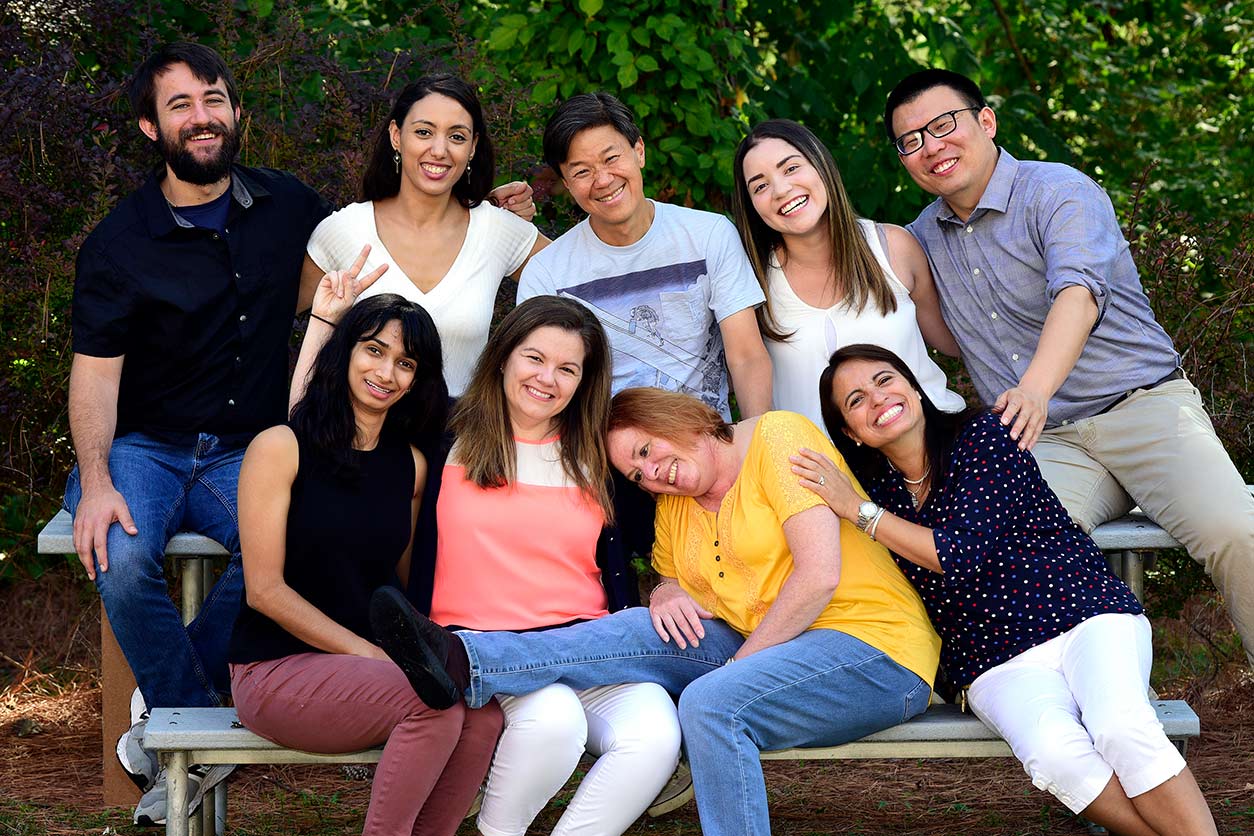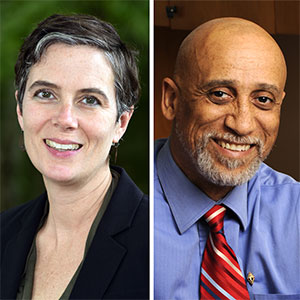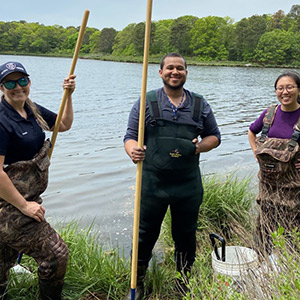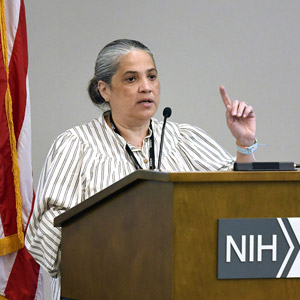In January, after fewer than two years at NIEHS, former Postdoctoral Visiting Fellow Namya Mellouk, Ph.D., began a new career in Jouy en Josas, France. She is a researcher at the National Research Institute for Agriculture, Food, and the Environment (L’Institut National de Recherche pour l'Agriculture, l'Alimentation et l'Environnement, or INRAe).
 Mellouk’s contributions at NIEHS included volunteering in 2019 as judge for the National Institutes of Health Postbaccalaurate Poster Day and as the Spirit Lecture committee’s trainee member. (Photo courtesy of Namya Mellouk / INRAe)
Mellouk’s contributions at NIEHS included volunteering in 2019 as judge for the National Institutes of Health Postbaccalaurate Poster Day and as the Spirit Lecture committee’s trainee member. (Photo courtesy of Namya Mellouk / INRAe)There, Mellouk uses the skills and techniques she acquired at NIEHS to continue her research-intensive career. She plans to further explore developmental pathways that contribute to rabbit embryo development.
Unparalleled opportunity
Towards the end of her doctoral training, Mellouk was looking for a transformative experience. At a 2018 summer conference, she stumbled upon a presentation by Humphrey Yao, Ph.D., head of the NEIHS Reproductive Developmental Biology Group. He ended his presentation with an advertisement for new postdoctoral researchers to join his lab. Mellouk gave him her business card, not knowing how her life would change from that exchange.
When she returned home, she found an email waiting in her inbox from Yao asking if she was interested in a postdoctoral position, along with an invitation for an interview. Mellouk traveled from Tours, France to the United States in February 2019, on Superbowl Sunday — immediately experiencing her first of many American traditions.
As a visiting fellow, Mellouk performed research under Yao’s mentorship. Her career goal was to return to France and secure an academic position in a top institute. Mellouk credits her success to the strong mentorship she received, as well as the resources available to her at NIEHS.
Laser focus on career goals
During her brief time at NIEHS, Mellouk researched the effects of arsenic exposure on adult mice. In a paper published in the journal Reproductive Toxicology, Mellouk showed that pregnant mice that drank water containing inorganic arsenic at concentrations relevant to human consumption and at levels that trigger tumor growth, resulted in obesity in the male offspring. She also found that males experienced negative reproductive effects, such as decreased fertility.
“Arsenic messes everything up!” Mellouk explained. “Arsenic causes a metabolic and reproductive phenotype in both male and female mice. The limit of arsenic allowed in our drinking water may need to be reconsidered.” Phenotypes refer to clinical signs of biological changes.
Forming community
Mellouk said her success stemmed from the connections and encouragement she received at NIEHS. She formed strong friendships and received support from different laboratory members and staff.
“Namya’s positive outlook is contagious,” Yao noted. “It is impossible not to feel the uplifting energy when you see her smile. We all learned tremendously from her life experiences and religious background in addition to her keen scientific observation.” Mellouk’s Muslim observances were a new experience for many of her colleagues.
Her colleague in Yao’s lab, Ciro Amato III, Ph.D., an Intramural Research Training Award (IRTA) postdoctoral fellow, agreed. “It was a joy to work with Namya. We had many fun discussions about the future of academia and scientific research. Namya was an optimist and always had a positive outlook on people and society,” he said.
 Yao’s group hammed it up in a pre-pandemic photo that included, from left, back row, Amato; Mellouk; Yao; Iris Salswach Cadena; Fei Zhao, Ph.D.; front row, Rattan; Barbara Nicol, Ph.D.; Paula Brown; Karina Rodriguez, Ph.D. (Photo courtesy of Steve McCaw / NIEHS)
Yao’s group hammed it up in a pre-pandemic photo that included, from left, back row, Amato; Mellouk; Yao; Iris Salswach Cadena; Fei Zhao, Ph.D.; front row, Rattan; Barbara Nicol, Ph.D.; Paula Brown; Karina Rodriguez, Ph.D. (Photo courtesy of Steve McCaw / NIEHS)Mellouk’s advice is that you should interact with people. “It might help with your English, especially if you’re a foreign postdoc! As a foreigner, you don’t only come for the research, but for the country and culture. Take everything you learn and the people you meet and listen to them. Welcome everyone, branch out, never say no, and if things don’t work out, stop.”
Citation: Rodriguez KF, Mellouk N, Ungewitter EK, Nicol B, Liu C, Brown PR, Willson CJ, Yao HH. 2020. In utero exposure to arsenite contributes to metabolic and reproductive dysfunction in male offspring of CD-1 mice. Reprod Toxicol 95:95–103.
(Saniya Rattan, Ph.D., is an IRTA postdoctoral fellow in the NIEHS Reproductive Developmental Biology Group.)









